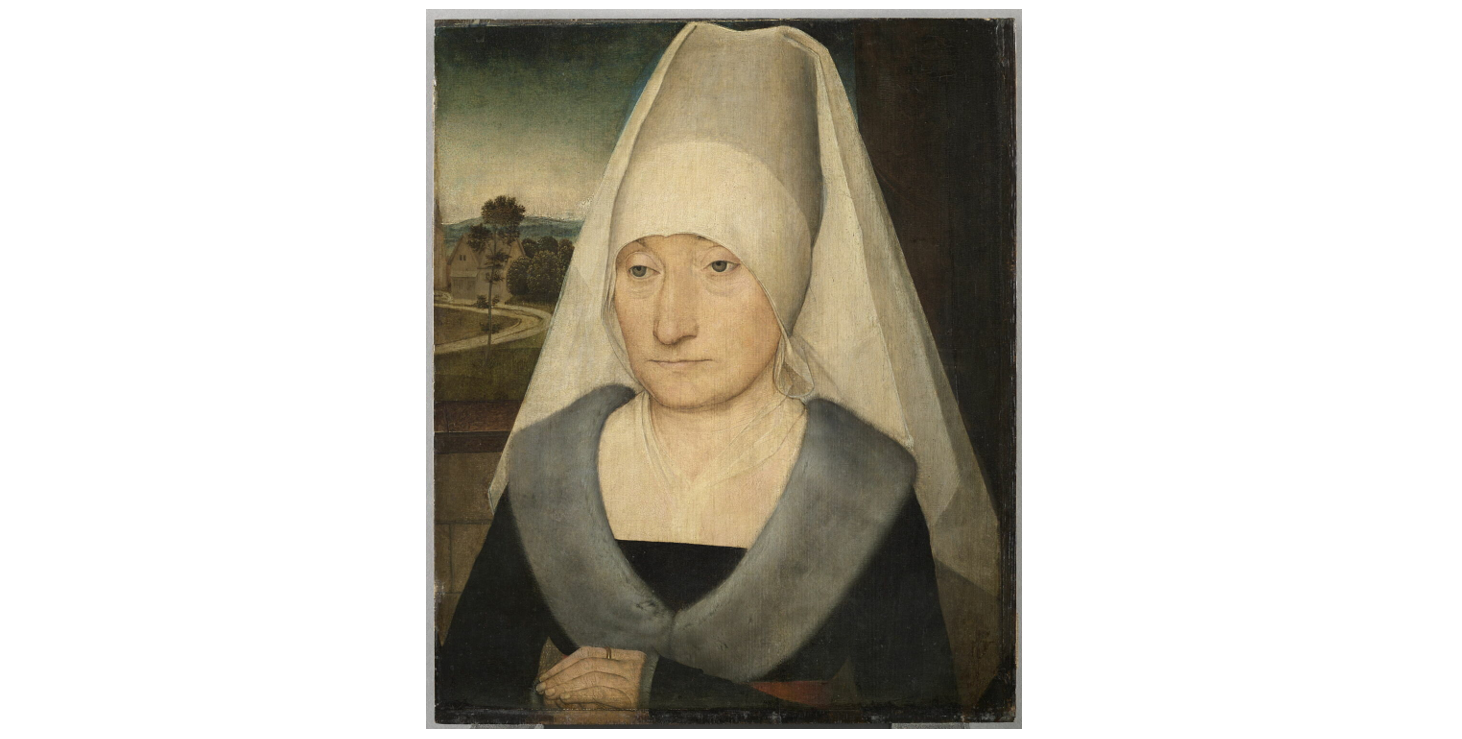+39 0669887260 | info@wucwo.org | Contact us
Art for Mediatation - February 2025

Hans Memling (Selingenstadt c. 1430 - Bruges 1494), Portrait of an Elderly Woman, 1470-72, oil on panel, 35 x 29 cm, Paris, Musée du Louvre
Signs of hope: the elderly.
It is not all that often in the world of painting that one comes across a portrait of an elderly person. There are many reasons for this, such as the fact that centuries ago the average age was much lower and there were far fewer elderly people than today, or because it was believed that beauty fades with age and therefore, for an art that tended towards perfection, the elderly person was not an interesting subject.
The beautiful portrait painted by the great Flemish painter Hans Memling in the second half of the 15th century is certainly an interesting example that tells us several things about old age and the consideration it might have received at that time.
The first thing that strikes me is the extreme realism with which the woman is depicted. The painter does nothing to conceal the signs of age and although we do not know her name we can certainly imagine that the small portrait in question was done to perhaps be kept by someone dear to her, who in this way could also have a visual reminder of the woman.
A second thing that is striking is the dignity that the portrait evinces. The woman wears clothes that certainly indicate sobriety (just look at the choice of colours: white, black, grey and a flash of red given by the belt that can be glimpsed) but which are also at the same time elegant and refined. Evidence of this can be observed in the fur that encircles the neck in a broad manner and protrudes from the sleeves' cuffs, but also by the transparency of the blouse or the composure of the veil which envelops and completely conceals the hair. We do not know if the woman was rich, but we can assume that she was not poor, considering that she could afford to pay a famous painter of the time. And yet she does not flaunt anything, we only notice a simple ring on her left index finger.
A third thing I like to emphasise is the gaze of this elderly woman, which stares far beyond the space of the painting even though it does not cross that of us viewers. It is the gaze of someone who has come a long way (this seems to be alluded to by the beautiful landscape glimpsed through the window on the left, with a house immersed in the green and the curve of a road), someone who perhaps no longer expects much from life, someone who with dignity and calmness faces the days that life has in store for her.
The elderly, who frequently feel lonely and abandoned, also deserve signs of hope. Esteem for the treasure that they are, their life experiences, their accumulated wisdom and the contribution that they can still make, is incumbent on the Christian community and civil society, which are called to cooperate in strengthening the covenant between generations.
Here I would also mention grandparents, who represent the passing on of faith and wisdom to the younger generation. May they find support in the gratitude of their children and the love of their grandchildren, who discover in them their roots and a source of understanding and encouragement.
(Francis, Bull of Indiction of the Jubilee 2025 Spes non confundit 14)
(Contribution by Vito Pongolini)